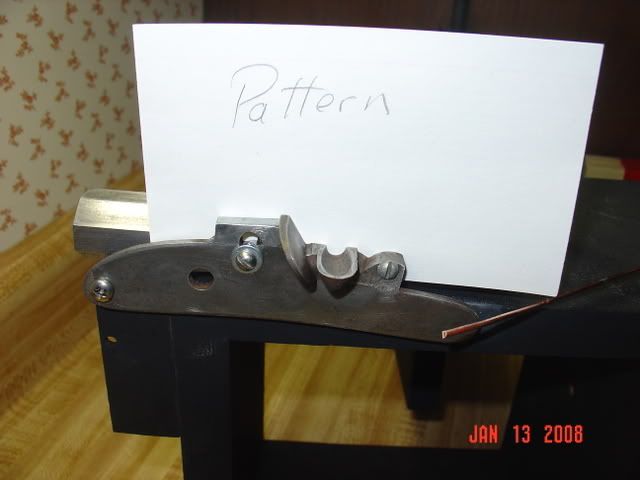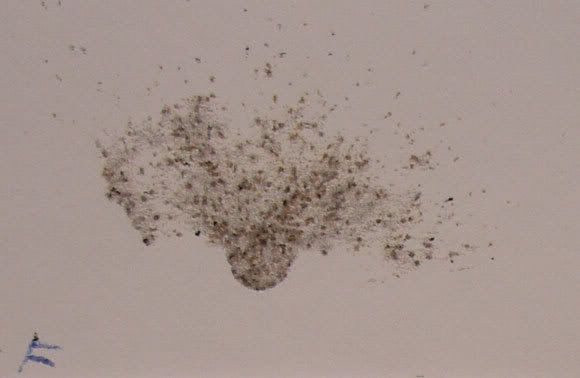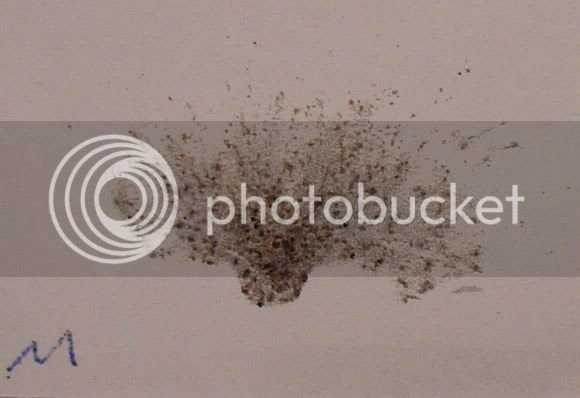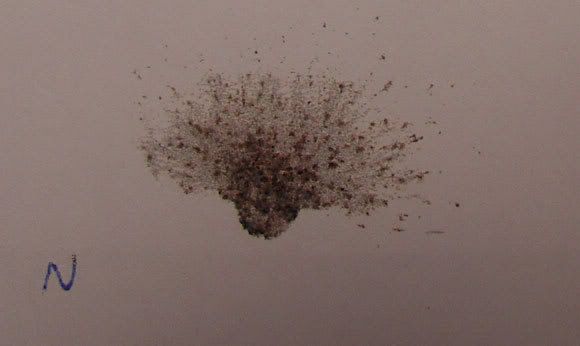Larry Pletcher
50 Cal.
- Joined
- Jul 27, 2006
- Messages
- 1,313
- Reaction score
- 67
I'm getting ready to run some experiments on the location of the vent in relationship to the pan. It was suggested to me that I try the following experiment to see what happens when the priming charge is located differently in the pan.
Here are pics that show the effect of powder location in the pan. First, the top pic shows how the experiment was done. I placed an index card between the pan and the barrel stub. I primed with a measured amount of Swiss Null B. My plunger type pan charger threw 1.6 gr, but I weighed the charges and included only those whose weights were within 1 tenth gr. The charge was ignited with a red-hot copper wire. The first pic shows burn pattern in a pan with the charge as far from the vent as possible. The second shows the pattern with the charge in the center of the pan. The last pic shows the results with the pan charge as close to the barrel as possible.

(Fixture with index card in place)

(Priming powder on outside edge of pan)

(Prime in center of the pan)

(Prime as close to barrel as possible)
This test was not designed to predict what happens in the vent or the barrel. It simply shows the relative amount of fire hitting the side of the barrel. (This is an easy test to do. Since I tried only one type of powder and used only one lock plate, You might be interested in trying this with your lock plate.)
Regards,
Larry Pletcher
Pletch
Here are pics that show the effect of powder location in the pan. First, the top pic shows how the experiment was done. I placed an index card between the pan and the barrel stub. I primed with a measured amount of Swiss Null B. My plunger type pan charger threw 1.6 gr, but I weighed the charges and included only those whose weights were within 1 tenth gr. The charge was ignited with a red-hot copper wire. The first pic shows burn pattern in a pan with the charge as far from the vent as possible. The second shows the pattern with the charge in the center of the pan. The last pic shows the results with the pan charge as close to the barrel as possible.

(Fixture with index card in place)

(Priming powder on outside edge of pan)

(Prime in center of the pan)

(Prime as close to barrel as possible)
This test was not designed to predict what happens in the vent or the barrel. It simply shows the relative amount of fire hitting the side of the barrel. (This is an easy test to do. Since I tried only one type of powder and used only one lock plate, You might be interested in trying this with your lock plate.)
Regards,
Larry Pletcher
Pletch






